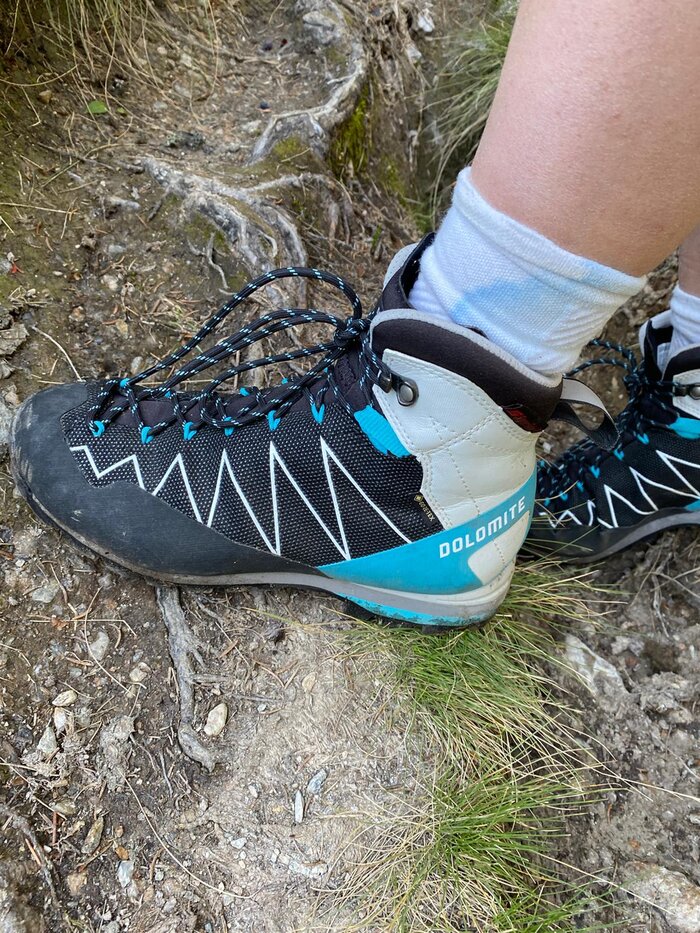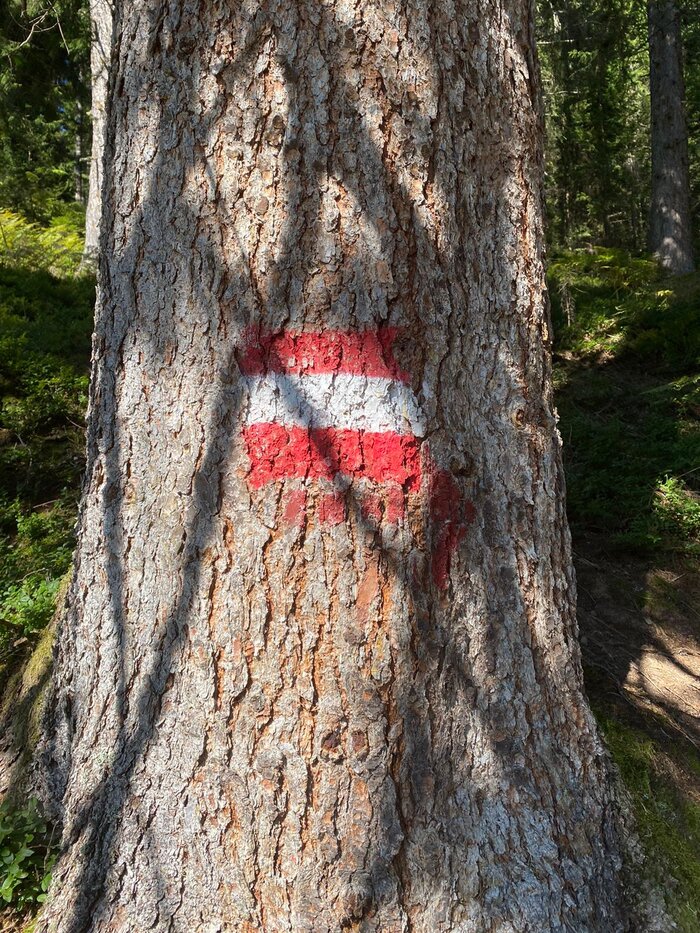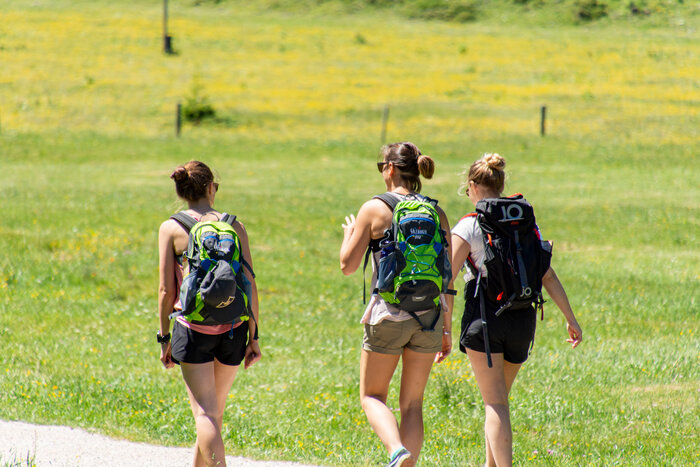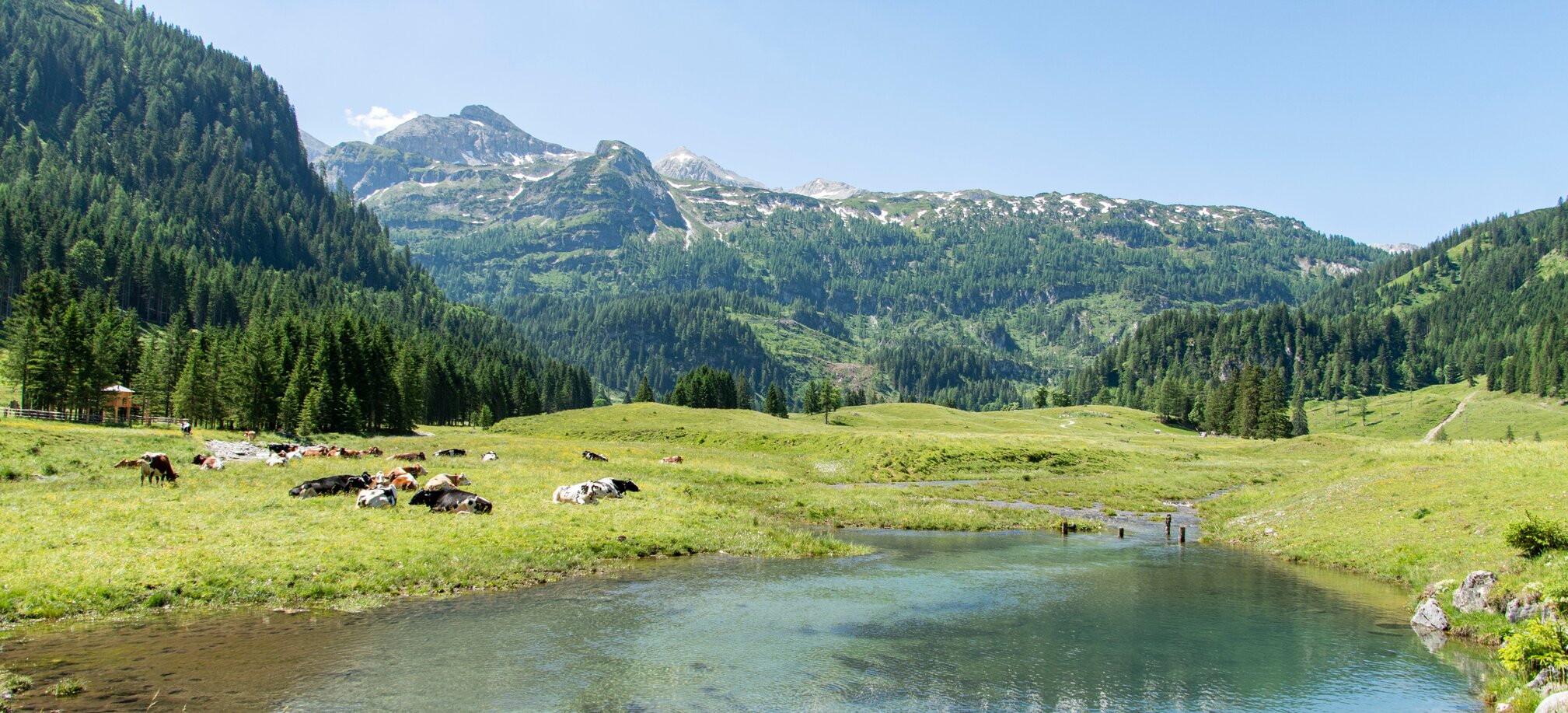Before every mountain hike, check the route, level of difficulty, trail conditions, and weather forecast. Adjust the tour to your fitness level and plan alternatives. Let friends or family know where you're going and which route you’re taking—this is the best way to prepare for emergencies.
At the start of each hike and on every hiking map, you’ll find route colour codes: blue, red, or black. Similar to the colour codes for ski slopes, blue routes are easier and shorter, with fewer elevation changes. Red routes are more demanding, and black routes may include climbing sections. Carefully check the difficulty level of your chosen route and consider the challenges involved.

Having the proper equipment is essential. Sturdy hiking boots, weatherproof clothing, a first aid kit, hiking map, headlamp, and enough water belong in every backpack. You’ll find more about what to pack in our blog: The Perfect Hiking Checklist
But here are a few important hiking boot tips in advance:
- Make sure your boots fit well and support the ankles to avoid injury in rough terrain.
- The soles should have a deep tread and be slip-resistant to ensure a good grip and reduce the risk of slipping.
- Break in new boots by wearing them for a full day before your hike. Still, always carry blister plasters, just in case.
Hiking poles are also highly recommended. They help conserve energy on ascents and provide support on descents. Foldable ones are easy to stow in your backpack when not needed.
If you don’t have your own equipment or are missing something, simply visit one of the INTERSPORT Rent locations in Ski amadé. They have everything you need for your mountain adventure, and their trained staff can help you choose the right equipment.
Mountain weather can change quickly. Always check the forecast and be flexible. Hiking safely means being willing to turn back or postpone the hike in case of storms or lightning. Plan routes that pass by huts which may serve as shelter if needed.
In spring and autumn, trails may be wet with morning dew — wait until they dry to reduce the risk of slipping.
In summer, it's advisable to start early to avoid the midday heat. Additionally, thunderstorm risk increases in the afternoons during hot weeks. Be aware that snow can still fall in the mountains, even in summer. If it has cooled and snowed in the week before your hike, check whether snow is still on the trail. If so, it's better to postpone, as snowfields can be very slippery and the risk of falling increases.
Stay on marked trails and move carefully through steep or slippery sections. Avoid dislodging rocks and take regular breaks. Mindful behavior is a key aspect of mountain hiking.
When hiking through grazing areas: stay calm, keep your distance, and do not feed or pet animals—especially not mothers with offspring, as they may pose a danger. If you’re hiking with a dog, be extra cautious. Mother cows often perceive dogs as a threat.
Most hiking trails in Austria are marked with yellow signs at intersections. If you don’t see one, look for red-white-red markings on trees or rocks, which show the exact route and complement the yellow signs. Even well-marked trails can become hazardous in wet or foggy conditions. So always allow enough time and plan alternatives.

Know the emergency numbers, stay calm, and describe your location as precisely as possible. Always carry a charged phone and know how to signal for help. Preparation can make a crucial difference.
Here are the most important emergency numbers:
- European emergency number: 112
- Mountain rescue: 140
- Rescue: 144
If a hiking emergency occurs, every minute counts. Stay calm and make yourself visible. The alpine distress signal is a proven method: six signals (shouts, whistles, or lights) per minute, followed by a one-minute pause—repeat this until you receive a response. If you’re hiking alone, stay in a visible spot and avoid changing location unnecessarily. Visible signals like a spread-out jacket, emergency blanket, or flashing light help rescuers find you. Reflecting sunlight using your phone or a mirror can also attract attention from afar.

Hiking alone carries risks. Those hiking in the mountains with others benefit from mutual support, shared orientation, and faster help in emergencies. Especially on lesser-traveled paths or in changing weather conditions, groups are better at assessing risks and spotting dangers early. In a group, not only are mountain experiences shared, but valuable conversations and lasting memories are created.
If you still prefer solo hikes now and then, always inform a trusted person about your route and return time. And don’t forget to send a message once you’re home—preferably with lots of beautiful pictures from your mountain tour. 😉
Hiking safety requires planning, proper equipment, and awareness. If you follow these hiking tips, respect nature, and observe important rules, your time in the mountains will be both safe and unforgettable. So: pack your backpack, check the weather, choose your route—and off you go!


